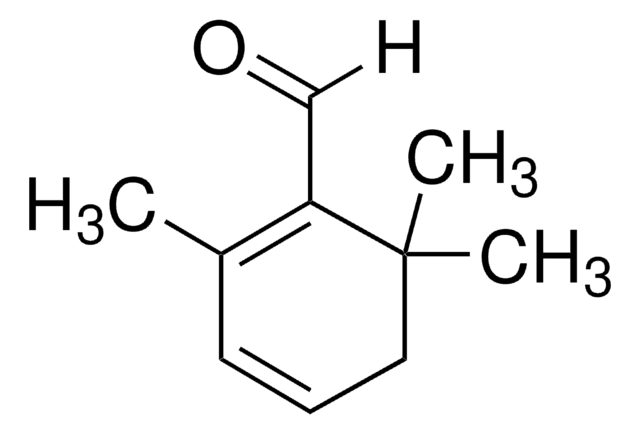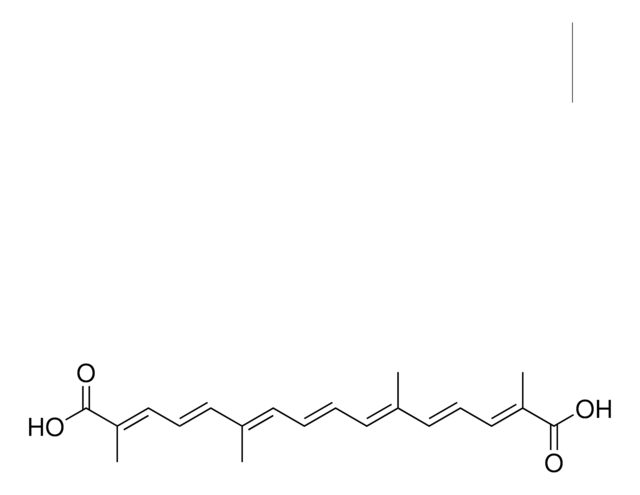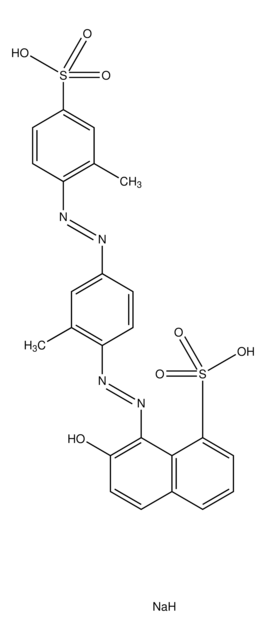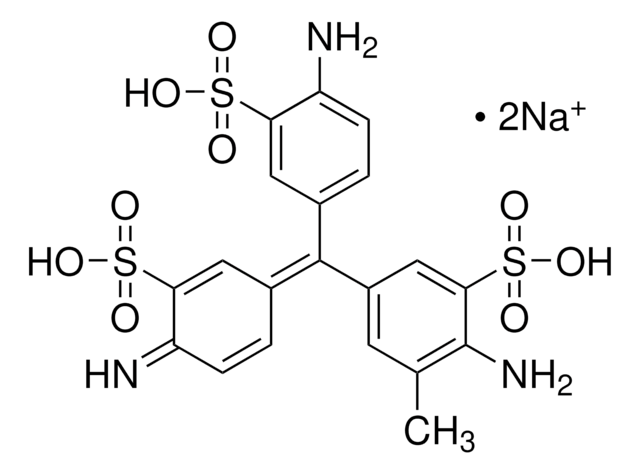S8381
Saffron
Crude extract isolated from Crocus sativus
Synonym(e):
Crocus sativus
Anmeldenzur Ansicht organisationsspezifischer und vertraglich vereinbarter Preise
Alle Fotos(2)
About This Item
UNSPSC-Code:
12171500
NACRES:
NA.47
Empfohlene Produkte
Produktbezeichnung
Saffron, crude source of crocetin and crocein
Methode(n)
microbe id | staining: suitable
Anwendung(en)
diagnostic assay manufacturing
hematology
histology
Lagertemp.
room temp
Allgemeine Beschreibung
Geeignet für den Einsatz in einer Vielzahl von histologischen Färbungen.
Anwendung
Saffron has been used to develop an HPLC analytical protocol for the identification and quantification of the major components of saffron. It has also been used to study its cytotoxic effects.
Biochem./physiol. Wirkung
Saffron is a crude source of the carotenoid antioxidants crocein and crocetin, as well as other carotenoids and monoterpene aldehydes. Saffron has been studied for use as an anticancer and chemopreventive agent and for its effects on antioxidant defense system pathways. A study in mice reported treatment with saffron reduced lipid peroxidation and caspase-3 activity, while increasing total brain antioxidant activity.
Lagerklassenschlüssel
11 - Combustible Solids
WGK
WGK 3
Flammpunkt (°F)
Not applicable
Flammpunkt (°C)
Not applicable
Persönliche Schutzausrüstung
Eyeshields, Gloves, type N95 (US)
Hier finden Sie alle aktuellen Versionen:
Besitzen Sie dieses Produkt bereits?
In der Dokumentenbibliothek finden Sie die Dokumentation zu den Produkten, die Sie kürzlich erworben haben.
Kunden haben sich ebenfalls angesehen
S Zahra Bathaie et al.
Critical reviews in food science and nutrition, 50(8), 761-786 (2010-09-11)
Saffron (Crocus sativus L.) has been an important subject of interest for research teams in the past two decades because of its various biological properties. Chemical analysis has shown the presence of more than 150 components in saffron stigmas. Here
HPLC quantification of major active components from 11
different saffron (Crocus sativus L.) sources
different saffron (Crocus sativus L.) sources
Heriberto Caballero-Ortega
Food Chemistry (2007)
Inhibitory Effect of Saffron (Crocus sativus L.) from Diferent
Countries
Countries
L. Riveron-Negrete
Laboratory Experiments in Organic Chemistry, 5th ed. null
Magdalini A Papandreou et al.
Behavioural brain research, 219(2), 197-204 (2011-01-18)
Brain aging is characterized by cognitive decline and memory deficits that could be the result of oxidative stress and impaired cholinergic function. In this study, the effects of a daily, 7-day, intraperitoneal administration of saffron on cognitive functions were examined
Biomedical properties of saffron and its potential use in cancer therapy and chemoprevention trials.
F I Abdullaev et al.
Cancer detection and prevention, 28(6), 426-432 (2004-12-08)
Chemoprevention strategies are very attractive and have earned serious consideration as potential means of controlling the incidence of cancer. An important element of anticancer drug development using plants is the accumulation and analysis of pertinent experimental data and purported ethnomedical
Unser Team von Wissenschaftlern verfügt über Erfahrung in allen Forschungsbereichen einschließlich Life Science, Materialwissenschaften, chemischer Synthese, Chromatographie, Analytik und vielen mehr..
Setzen Sie sich mit dem technischen Dienst in Verbindung.











